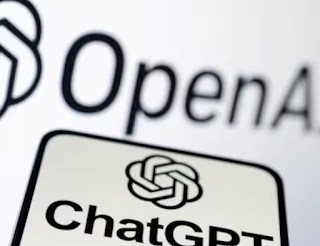OpenAI's latest launch, the GPT 4.1 series, is making waves in the AI and tech world, offering a substantial upgrade to its previous models. This new lineup, consisting of GPT 4.1, GPT 4.1 mini, and GPT 4.1 nano, is designed to address some of the most complex coding and development tasks, signaling OpenAI's continued efforts to solidify its position at the forefront of AI innovation. With the competition intensifying in the AI field—particularly with companies like Google, Anthropic, and DeepSeek pushing forward their own advanced models—GPT 4.1 promises to meet the growing demand for robust AI capabilities in the software development industry.
One of the most notable improvements in GPT 4.1 is its expanded context window, which now supports up to a massive 1 million tokens. This is a substantial increase from previous models, allowing GPT 4.1 to process and understand much larger chunks of information in a single query, making it more effective for tasks that require deep comprehension of long-form content or extensive codebases. Additionally, the models come with enhanced long-context comprehension, meaning they can retain and make use of context more effectively, leading to more accurate and efficient outputs.
OpenAI's blog emphasizes that these advancements in the GPT 4.1 series align with the broader industry trend of creating AI systems capable of tackling more sophisticated and demanding software engineering problems. The company is aiming to cater to a growing community of developers, engineers, and data scientists who need highly capable AI tools to handle intricate tasks such as automated code generation, debugging, and system design.
In terms of performance, OpenAI claims that GPT 4.1 delivers superior results compared to GPT 4o, especially in areas related to coding tasks. It outperforms its predecessor in generating cleaner code with fewer extraneous edits, following different programming formats reliably, and ensuring consistent tool usage. These improvements make GPT 4.1 a highly attractive choice for developers looking for a tool that can automate or assist in software development without the need for excessive manual intervention. It also excels in tasks like frontend coding, where precision and adherence to design specifications are crucial.
Another key aspect of the GPT 4.1 launch is its cost-effectiveness. OpenAI has significantly reduced the prices of these new models, making them more affordable for a wider range of developers. GPT 4.1 is 26% cheaper than GPT 4o for median queries, and the newly introduced GPT 4.1 nano is touted as the "cheapest and fastest model ever." This lower cost structure, combined with efficiency improvements in inference systems, means that developers can now access high-performance AI capabilities without breaking the bank. The pricing details for the models are as follows:
-
GPT 4.1: $2 per million input tokens and $8 per million output tokens
-
GPT 4.1 mini: $0.40 per million input tokens and $1.60 per million output tokens
-
GPT 4.1 nano: $0.10 per million input tokens and $0.40 per million output tokens
Additionally, OpenAI is offering a substantial prompt caching discount of 75% for queries that reuse the same context. This is a significant increase from the previous 50% discount, making repeated queries even more affordable. Long-context requests, which involve processing large amounts of data or code, will also be priced at the standard per-token rates, ensuring that developers can scale their AI usage without incurring extra costs.
The introduction of the GPT 4.1 series comes at a time when competition in the AI field is reaching new heights. Google’s Gemini 2.5 Pro, which also boasts a 1-million-token context window and Anthropic’s Claude 3.7 Sonnet are gaining traction, while DeepSeek's V3 model from China is also a strong contender. In this highly competitive environment, OpenAI’s advancements in coding tasks, long-context comprehension, and cost reductions position GPT 4.1 as a leading contender in the race for AI dominance in the software development sector.
As part of the launch, OpenAI is also phasing out GPT 4.5 Preview, which will be retired by July 14, 2025. Originally released as a research preview, GPT 4.5 provided valuable insights into the capabilities of highly compute-intensive models, but OpenAI has determined that GPT 4.1 offers comparable or superior performance across the board, making it the preferred choice for developers. OpenAI’s decision to retire GPT 4.5 ensures that developers can focus their resources on transitioning to the more efficient and cost-effective GPT 4.1 models.
Despite the phase-out of GPT 4.5, OpenAI reassures users that the creativity, writing finesse, humor, and nuance that users appreciated in GPT 4.5 will be integrated into future API offerings, ensuring that the unique qualities of GPT 4.5 are carried forward in upcoming models.
For developers and companies involved in AI-driven software development, GPT 4.1 offers a compelling proposition. The expanded context window, improved coding capabilities, lower cost, and reduced latency make it an attractive tool for those looking to enhance productivity and innovation in software engineering tasks. As the race to develop the next generation of AI tools continues, OpenAI's GPT 4.1 series is setting a new standard for what developers can expect from cutting-edge AI models.



